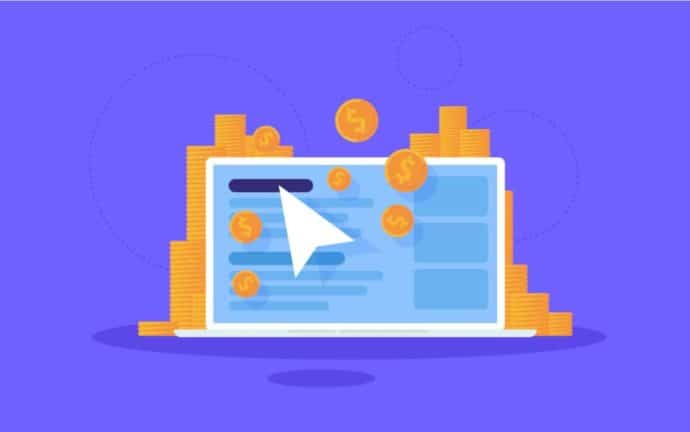Ever looked at a large budget and not known where to start?
Or been running with one, but are worried you’ve overlooked something that could boost performance?
Then you’ve come to the right place.
The Challenge
According to the Australian Financial Review, digital marketing now makes up 54% of overall marketing budgets in Australia. That’s $8.8 billion. That’s great news because larger budgets present significantly more opportunities to drive growth by opening alternative channels and adding keyword depth. But, with great budget comes great responsibility.
Planning a big budget can be daunting – especially if it’s for a long campaign – but there’s a fine art to it. Anyone can build a Google Ads account with keywords based on a website. The part that often gets missed is the ‘why’.
Why those channels?
Why that audience?
Why that structure?
If you get it right, you’ll drive significant growth through efficiencies and scale. But get it wrong, and you’ll hear the sad, soft crackling sound of burned up resources.
The Solution
This is our advice: Forget about the money.
The truth is, the fundamentals of running a successful campaign shouldn’t vary, regardless of budget levels. Your strategy and execution should be based on the specific business goals you want to achieve – goals that are informed by data.
Brands that don’t have a clear, data-backed strategy in place risk losing out on overlooked channels and wasting money on ones that aren’t ultimately relevant to their goals.
To help you make the most of your budget and avoid the common pitfalls, here’s a step-by-step guide to how we manage a 7-figure campaign at Yoghurt Digital:
Step 1: Plan
Confirm Your Channel Roles And Attribution
Before running any large campaign, you should be completely aligned on the role of each channel and how they work best together. Some of our clients spend upwards of 75% of their budgets on awareness-based activity, which is obviously important in itself, but won’t necessarily drive a positive Return On Advertising Spend (ROAS) when tracking back to the last click.
That’s why, from the outset, we recommend outlining the exact role in the strategy each channel will play and how you plan to evaluate its performance. That way, you’ll know exactly which channels will drive a positive ROAS and which won’t, so you can factor it into your planning from the outset.
Form A Data-Led Forecast
Don’t worry, this isn’t a BYO crystal ball kind of situation – just data-led predictions, plain and simple. Starting with an accurate forecast is a must for any campaign, but the larger a campaign’s budget, the more crucial this becomes.
Having an accurate forecast or benchmark can help prioritise your focus when working across multiple channels with lots of activity. The faster you can identify areas of under or over-performance across channels, the more efficient and optimised your activity will be.
The intervals and time frames of your budget should be based on how volatile the market is, and how frequently your campaign changes. For example, some of our clients have budgets that fluctuate from $10,000 to $100,000 a week, so we forecast their yearly activity by week in order to ensure we’re as nimble as possible to changing conditions.
Step 2: Organise
The larger your budget is, the easier it is to waste large sums of money due to poor account structure and maintenance. But don’t worry – we’ve already figured out an airtight approach. By focusing on account structure and keyword funneling, we recently reduced one of our client’s costs by 37% whilst driving a 108% increase in revenue. Here’s how:
Keep It Granular
While it might seem easier for larger accounts to create a broader structure, this approach will likely limit your optimisation opportunities. That’s why we recommend keeping your structure granular, even if it makes for a large build.
When creating a search structure, we follow a volume and intent approach. The overall basic structure should follow that of your site, with ad groups and campaigns also being split based on how many people search for a keyword and how likely that keyword is to convert.
Say you want to raise awareness of your brand’s collection of dresses, so you’ve used the broad term “dress” within your account. That term belongs in its own campaign, because it drives a high volume of traffic and you want to maintain complete control over how much budget is allocated to the term.
When it comes to slightly longer tail terms however, such as “blue shirt dress”, the volume won’t necessarily be high enough to justify being put in its own campaign, so we would group it with similar terms that drive similar conversion intent.
Don’t Neglect Your Negatives
A granular structure will only work if it’s backed up by a strong negative keyword structure to help filter keywords. In order to get the best possible results, we recommend including the below into your negative keyword structure:
- Remove Brand Terms From Generic – It may seem obvious, but we frequently inherit accounts where generic campaigns have been claimed to drive conversions that were actually branded search queries being picked up from a generic keyword. Eek.
- Remove Exact Match Terms From Your Broader Campaigns – Exact match terms carry a different Cost Per Click (CPC) and have very different intent, so if you aren’t rigorous in removing your exact match searches from other campaigns, they’ll likely be picked up by broader terms. This could lead to a reduction in the quality of your keyword data and potentially drive traffic to less relevant landing pages.
- Remove Conflicting Ad Group Categories – Make sure that any potential overlap is accounted for in ad group level negatives, for example, by removing alternative colours from a “Blue” specific ad group.
Additionally, ensure you plan time for fortnightly or monthly search query reviews (dependent on traffic volumes) to keep track of your traffic quality.
Step 3: Optimise
Always Utilise Audiences
If you’re running a 7-figure campaign, chances are you’re putting a large proportion of that budget into awareness-building activity. In order to ensure the most effective use of that new audience, we recommend building a cross-channel audience strategy to keep potential consumers in your funnel and prevent them from being snatched up by competition.
Whilst not all channels play well together when it comes to audiences, Google Ads allows for audience sharing across display, shopping, YouTube and search. As a result, you can build out a sequential targeting strategy that offers different messaging or ad formats depending on where in the buying cycle your customer is across all the different channels.
Test, Analyse, Repeat
By focusing on testing, we’re constantly gaining insights that can be used to drive extra value from our campaigns.
Across Google Ads you can test formats, bid strategies, messaging, audiences and more, all of which will inform you about how your customers, thereby assisting you in shaping future strategies. As a benchmark, we usually recommend running at least one test per channel each month for larger campaigns.
Keep An Eye On The Competition
Those pesky competitor campaigns can be a great source of inspiration when it comes to testing new platforms, approaches and messaging. Plus, chances are if you have a larger budget you probably have some fairly large fish swimming in the same pond as you.
There is no ‘right’ way to run a campaign, but while it’s easy to assume all your competitors are simply aiming to increase revenue, there might be secondary KPIs in place that differ from yours. So make sure you keep an eye on auction insights and competitor bidding tools, and monitor any impacts that competitor sales or offers have on your activity. But remember: Don’t fall into the trap of trying to duplicate a competitor’s strategy.
Make Your Budget Go The Distance
Always remember – no strategy will ever be completely perfect from the outset, but if you remain agile in your approach and continually track performance back to your forecast, you should be able to drive incremental improvements as you go. The only real risk is that you’ll be so successful, your boss might give you an 8-figure budget – and then you’ll have to plan that one out. But that’s another blog post, for another time.
At Yoghurt Digital, we’re used to helping businesses make the most of their budgets – both big and small – with bespoke digital strategies. We operate based on a love affair with data, not opinions. If you think you could benefit from our strategic guidance, our team will be more than happy to lend their years of experience to help you achieve the results you need.

